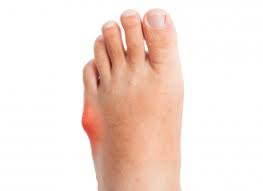A Tailor’s bunion, also referred to as a bunionette is a common foot problem that may cause significant discomfort and aggravation for individuals who suffer from it. The Tailor’s bunion is a condition characterized by the formation of a painful bump about the lateral side of the feet, just below the small toe. The clinical phrase for this disorder is “bunionette” due to its resemblance to a standard bunion which occurs to the great toe’s base. The name Tailors bunion is called that becasue it was thought to be more common in Tailors who historically used to work sitting cross legged putting pressure on the outside of the big toe. Whereas traditional bunions build up on the inside of the foot, Tailor’s bunions affect the lateral part, leading to inflammation and pain in the location. The chief reason for a Tailor’s bunion could be the misalignment from the 5th metatarsal bone, which ends up in the small toe moving inward, while the metatarsal bone projects to the outside. A hereditary history of foot deformities or bunions, you will be at a higher risk of getting a Tailor’s bunion. Using tight or narrow shoes, particularly those having pointed toes, may force the toes together, resulting in misalignment and raised pressure to the fifth toe. People who have particular foot postures, for example a high arched or a flexible foot, could be more susceptible to getting a Tailor’s bunions. The symptoms of Tailor’s bunion differ from individual to individual but generally the bony lump can be sore, painful, and sensitive to the touch, specifically when wearing shoes or squeezing tightly to the affected region. The skin around the bunionette can become reddish, swollen, and irritated a result of the force and friction from shoes. As the condition get worse, you may experience decreased mobility within the little toe, which makes it difficult to perform a number of actions.
Managing and treating a Tailor’s bunion could involve both conservative and also medical interventions with the very first approach being wearing spacious, comfortable shoes which has a broad toe area will alleviate force on the bunionette and offer comfort. Gel pads or cushioned inserts might help reduce rubbing and protect the affected region. Applying ice to the Tailor’s bunion can help lessen inflammation and decrease pain. In serious cases, cortisone injections may be given to reduce inflammation and pain. If these conservative strategies aren’t able to offer comfort, surgical procedures may well be considered to realign the bone and fix the deformity. To prevent the growth of a Tailor’s bunion choose correct footwear that is comfortable, well-fitting shoes with adequate space for your toes to move freely. Limit using high-heeled or pointed-toe shoes, as they possibly can aggravate foot disorders.
